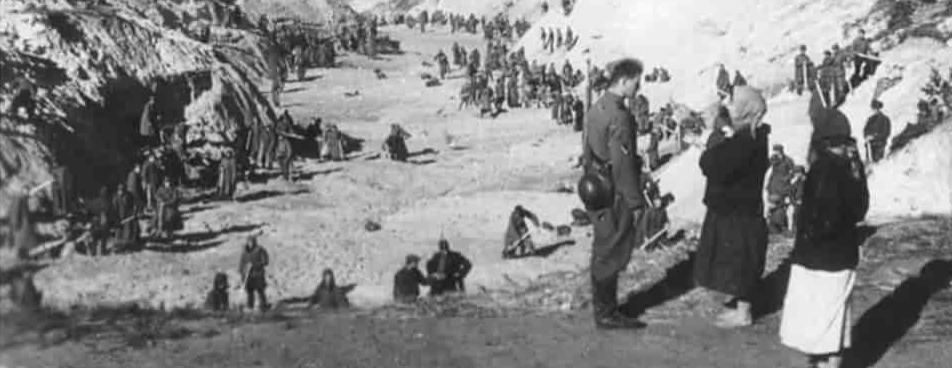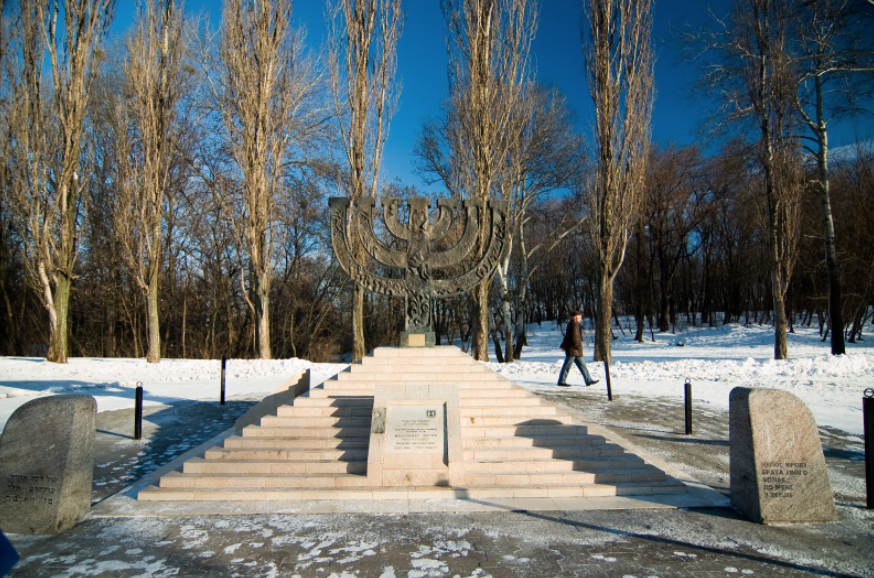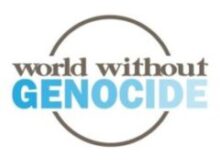On September 26, 1941, the following order was posted in Kyiv, Ukraine in three languages: Russian, Ukrainian, and German:
All Yids [Jews] of the city of Kiev and its vicinity must appear on Monday, 29 September, by 8 o’clock in the morning at the corner of Mel’nikova and Dokterivskaya streets (near the Viis’kove cemetery). Bring documents, money and valuables, and also warm clothing, linen, etc. Any Yids who do not follow this order and are found elsewhere will be shot. Any civilians who enter the dwellings left by Yids and appropriate the things in them will be shot.
The Jews were marched from their homes to Babyn Yar, a ravine on the outskirts of Kyiv, where they were forced to remove their clothes and pile up their belongings. Then they were lined up in rows, naked, and marched, row by row, to the edge of the ravine.

Soviet Prisoners believed to be leveling the sand roof in Babyn Yar a few days after the great massacre.
They were shot in the back and they tumbled forward, face down into the sand and rock and gravel below, the next row, then the next, and the next. The mass grave became a heaving mound of bodies as victims’ last breaths escaped after the gunshots and the suffocation from the mountains of people in the rows above them.
According to Nazi records, 33,771 Jews were killed in two days, September 29-20, 1941.
The site continued to be used as a mass grave after these brutal two days, ultimately holding upwards of 150,000 bodies of Jewish men, women, and children, and Roma, non-Jewish Ukrainians, and Soviet prisoners of war. Nazi soldiers, local Ukrainian police, and ordinary citizens collaborated in this mass execution. Some soldiers took pictures that they proudly sent back home, showing off their work.
After the war, the Soviet government, in control of Ukraine, made it difficult to create memorials. Russian poet Yevgeny Yevtushenko wrote a stunning poem in 1961 that begins “Over Babi Yar there are no monuments.” Russian composer Dmitri Shostakovich’s Symphony No. 13 is subtitled “Babi Yar,” and is a companion to Yevtushenko’s poem.

Babyn Yar memorial. Image by smcgee|CC BY-NC 2.0| License: https://creativecommons.org/licenses/by-nc/2.0/legalcode
After the collapse of the Soviet Union in 1991, several memorials were erected on the site. At a commemoration in 2006, Chief Rabbi of Tel Aviv Yisrael Meir Lau suggested that if the world had reacted to the Babyn Yar massacre, perhaps the Holocaust might never have happened.
Only a few months after the massacre, in January 1942, Nazi leaders gathered at Wannsee and made a decision about the ‘final solution’ to the Jewish problem – to terminate the time-consuming executions by bullets and to establish mass killing centers. This was the genesis of Auschwitz and five other extermination sites at which millions of Jews perished.
On March 1, 2022, the Babyn Yar Holocaust memorial complex was struck by a Russian missile during Russia’s invasion of Ukraine. The attack killed at least five people.
Volodymyr Zelenskyy, President of Ukraine, wrote on Twitter, “What is the point of saying ‘never again’ for 80 years, if the world stays silent when a bomb drops on the same site of Babyn Yar?”
Over and over and over again.



